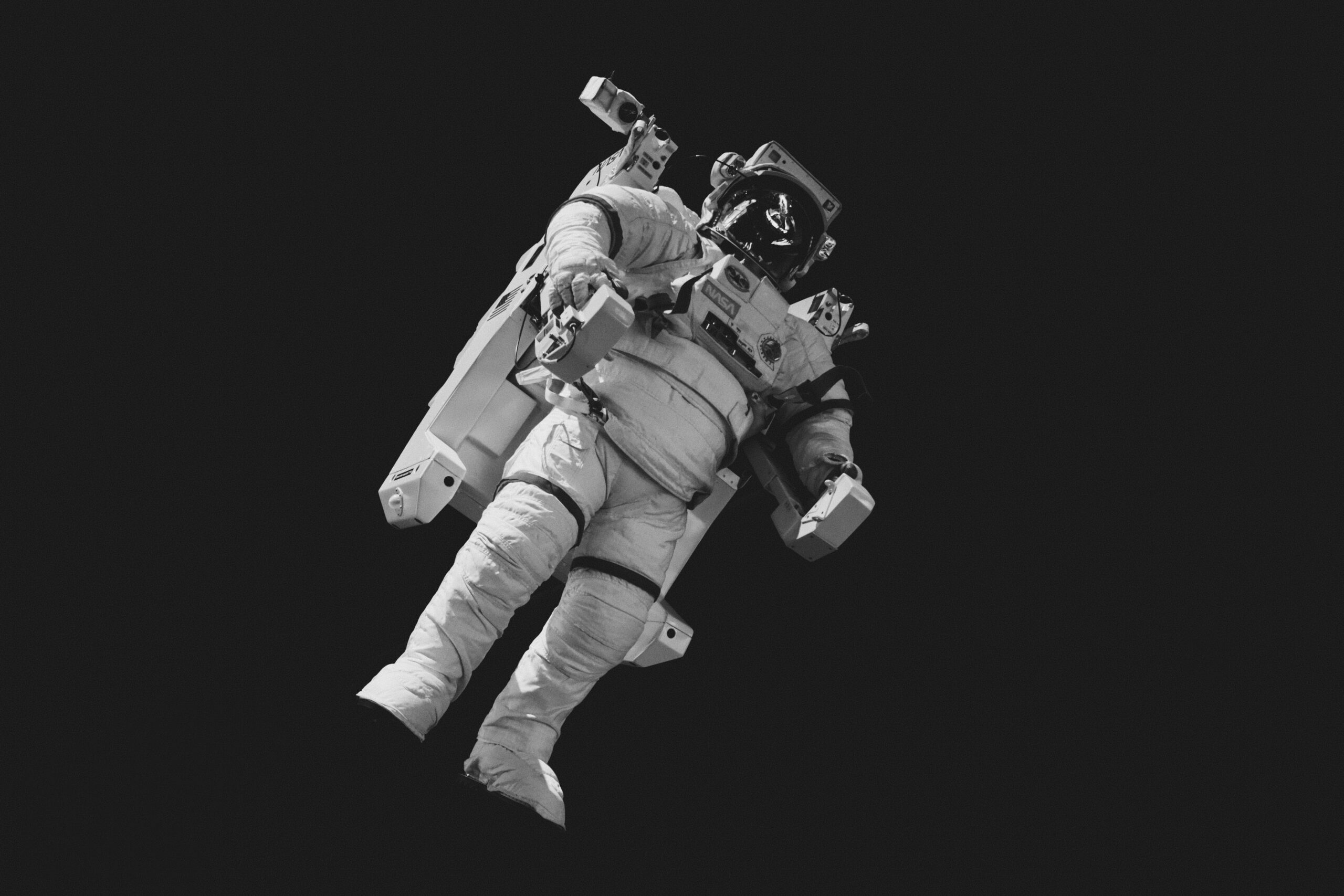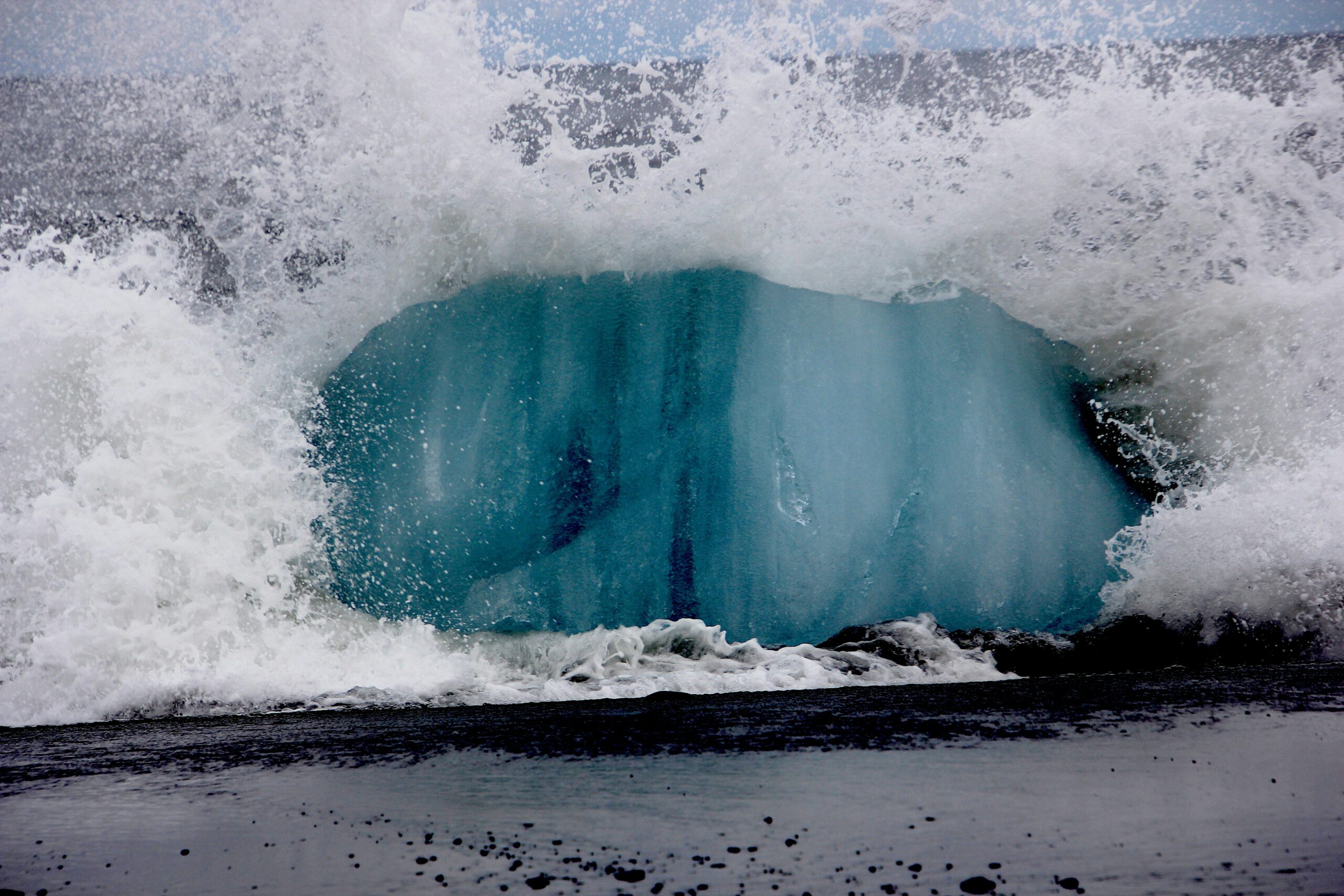Introduction to Sunita Williams and Her Legacy
Sunita Williams is a prominent figure in the realm of space exploration, recognized not only for her remarkable accomplishments as an astronaut but also for her role in inspiring future generations. Born on September 19, 1965, in Needham, Massachusetts, Williams is of Indian descent, with her parents emigrating from India to the United States. She holds a Bachelor of Science degree in Physical Science from the United States Naval Academy and a Master’s degree in Engineering Management from the George Washington University, showcasing her proficiency in both the sciences and military training.
Her career with NASA began when she was selected as an astronaut candidate in 1998. Since then, Williams has completed multiple missions aboard the International Space Station (ISS), where she has made significant contributions to scientific research and international cooperation in space. Notably, during her tenure, she set records for the longest spaceflight by a woman, totaling 195 days, and is also known for holding the record for the most spacewalks by a female astronaut, surpassing her peers with seven spacewalks and a cumulative duration of over 50 hours.
Williams’ expeditions have not only provided invaluable data for various experiments but have also enhanced our understanding of long-duration human spaceflight. Her experiences on the ISS have been instrumental in informing future missions, particularly those involving human travel to Mars. Beyond her technical expertise, Williams serves as a powerful role model for women in science, technology, engineering, and mathematics (STEM). By breaking barriers in a field traditionally dominated by men, she embodies resilience and determination, remaining a significant figure in NASA’s efforts to promote diversity within its ranks. Her contributions underline the importance of inclusive representation in the pursuit of scientific advancement and space exploration.
The Role of NASA and SpaceX in Current Missions
The collaboration between NASA and SpaceX marks a significant milestone in the evolution of human spaceflight. This partnership has forged a new path for commercial space exploration, enhancing the ability to send astronauts into orbit and beyond. At the heart of this collaboration is the Crew Dragon spacecraft, a pivotal development designed to transport crew to the International Space Station (ISS) and other destinations in low Earth orbit. NASA’s investment in private sector endeavors, particularly with SpaceX, underscores a strategic shift aimed at reducing costs and accelerating innovation in space travel.
NASA’s Commercial Crew Program, initiated to revitalize human spaceflight capabilities, has enabled SpaceX to design and operationalize the Crew Dragon spacecraft. This reusable spacecraft not only facilitates the transportation of astronauts but also emphasizes safety and reliability, crucial elements for sustaining human presence in space. The successful test flights and subsequent crewed missions have proved the efficacy of this public-private partnership, demonstrating an effective model for future exploration endeavors.
The impact of the NASA-SpaceX alliance extends beyond just the execution of current missions; it sets a precedent for future collaborations in space exploration. By empowering commercial companies like SpaceX, NASA can focus on ambitious projects, such as the Artemis program, which aims to return humans to the Moon and eventually pave the way for Mars exploration. This collaboration also fosters a competitive environment that may encourage innovation among other companies vying for a stake in space travel.
In summary, the relationship between NASA and SpaceX represents a transformative era in human spaceflight. It emphasizes the potential of leveraging commercial capabilities to achieve governmental objectives, while simultaneously seeking to expand the horizons of space exploration. As missions continue to evolve, the implications of their joint efforts will undoubtedly shape the future landscape of space endeavors.
Sunita Williams’ Time on the International Space Station (ISS)
Sunita Williams, an accomplished astronaut, spent a significant portion of her career aboard the International Space Station (ISS), where she was able to immerse herself in a fascinating environment that radically differed from life on Earth. Life aboard the ISS is structured around rigorous daily routines that include work, exercise, and essential downtime. Astronauts typically follow a strict schedule, dedicating a substantial amount of their time to various scientific experiments and research projects, which can only be conducted in the unique conditions of microgravity.
One of Williams’ primary responsibilities was to conduct scientific research that aimed to enhance our understanding of various phenomena, from the effects of long-term space travel on the human body to studies on combustion, fluid mechanics, and biological processes. For example, Williams participated in experiments involving plant growth in microgravity, which could have implications for future space missions and human colonization efforts on other planets. The ability to witness plant life grow in such an extraordinary environment was a remarkable aspect of her work.
Despite rigorous schedules, life aboard the ISS presented its own set of challenges. Adapting to microgravity often took time; mundane tasks like eating and drinking required adjustments. For instance, food needs to be consumed in a dehydrated form, and liquids are dispensed from special pouches due to the absence of gravity. Williams often humorously recounted the challenge of keeping her floating food from escaping and the peculiarities of brushing her teeth in a weightless environment.
The psychological aspect of living in microgravity for extended periods was another notable challenge. Williams acknowledged the importance of camaraderie among the crew, sharing anecdotes of daily interactions and camaraderie that fostered a supportive atmosphere. These experiences not only optimized her work but also contributed to a fulfilling emotional experience during her time on the ISS.
The Technology Behind Live Space Streams
The advent of technology has significantly transformed the way we engage with space missions, enabling viewers to connect with astronauts, such as Sunita Williams, in real-time. Live streaming of space missions relies on a sophisticated infrastructure that ensures seamless capture and transmission of video from the International Space Station (ISS) to audiences on Earth.
Central to this technology is a network of advanced cameras and communication satellites. The ISS is equipped with high-definition cameras specifically designed to withstand the unique challenges posed by the space environment. These cameras capture stunning visuals of space, Earth, and the astronauts at work, providing a memorable viewing experience. The cameras utilize specialized lenses and sensors that can function under varying light conditions, ensuring that the footage remains clear and visually impactful regardless of the space station’s orientation.
Once captured, the footage is transmitted to ground stations on Earth via a series of communication satellites. These satellites operate within several frequency bands, facilitating high-speed data transfer. The key technology utilized in this transmission is the Ku-band communication system, which allows for the streaming of video footage with minimal latency. This system enables direct communication, ensuring that the broadcast reaches viewers with minimal delay, allowing them to engage with missions as they unfold.
Moreover, the integration of Internet technology plays a crucial role in live streaming. High-speed internet connections at ground stations allow for the quick processing and distribution of live video feeds. The implementation of real-time streaming protocols ensures that viewers worldwide can access the content effortlessly, whether through dedicated platforms or social media channels. This infrastructure not only enhances public interest in space exploration but also humanizes the experience by allowing individuals to witness the activities of astronauts like Sunita Williams firsthand.
Sunita Williams’ Return to Earth: What to Expect
The return of an astronaut to Earth after an extended mission in space is an intricate process that entails meticulous planning and execution. Sunita Williams, an esteemed astronaut with multiple space missions under her belt, is expected to experience a series of defined protocols during her return. This phase of a space mission is not only a logistical operation but also an emotional journey for the astronauts involved. Upon re-entry, Williams will undergo a series of structured procedures designed to ensure safety and a smooth transition back to life on the planet.
As her spacecraft re-enters the Earth’s atmosphere, it will encounter intense heat and pressure. To withstand these conditions, the vehicle is equipped with heat shields that protect it from the extreme temperatures caused by friction. Almost immediately, there is a series of critical maneuvers that must be executed, including various angle corrections and thruster activations to ensure a controlled re-entry. The precise timing of these actions is crucial, as even minor miscalculations can lead to significant deviations in the landing trajectory.
Once Sunita Williams’ spacecraft touches down, typically in less than ideal conditions, the initial moments post-landing are overwhelming. Ground control teams will be on high alert as recovery teams move in swiftly to secure the environment surrounding the landing site. Williams will likely experience a rush of emotions as she reconnects with gravity and her home planet after prolonged exposure to microgravity. The first post-landing assessments are crucial, focusing on her health and well-being, which can involve immediate medical evaluations to address any potential physical effects stemming from her time in space.
This comprehensive process reflects the dedication and commitment inherent in the field of space exploration, highlighting the physical and psychological toll of such missions. Sunita Williams’ return is determined not only by technical protocols but also by the emotional significance of re-establishing a connection with Earth after an extraordinary journey in space.
Impact of Space Travel on Astronauts’ Health
The exploration of space necessitates extended durations away from Earth, leading to a variety of unique challenges regarding astronauts’ health. Research indicates that prolonged exposure to microgravity can significantly affect various physiological systems. One of the most well-documented consequences is muscle atrophy; astronauts can lose up to 20% of their muscle mass during a typical six-month mission aboard the International Space Station (ISS). The absence of gravitational forces means that muscles and bones do not experience the stress they typically encounter on Earth, creating a pressing need for effective countermeasures such as resistance exercise training methods implemented by astronauts.
Additionally, bone density loss is another critical health concern in space travel. Studies have shown that astronauts experience a decrease in bone mineral density of approximately 1% to 2% per month in microgravity environments. This deterioration raises the risk of fractures and osteoporosis, necessitating a deeper understanding of how space travel affects skeletal health over the long term. Various investigations are now being conducted to explore nutritional interventions and exercise regimens aimed at mitigating these adverse effects.
The psychological effects of long-term spaceflight have also garnered attention. Factors such as isolation, confinement, and the challenging work environment can contribute to stress and emotional distress. Astronauts undergo rigorous psychological evaluations and training to equip themselves with coping strategies to maintain mental well-being during missions. Research examining the psychological impacts of space travel emphasizes the importance of social support systems and communication with family and friends to alleviate feelings of loneliness and anxiety.
Understanding the physical and psychological impacts of space travel is crucial for future exploratory missions, especially as humankind looks toward potential journeys to Mars and beyond. Continuous studies and research in this area will foster better preparation for the health and well-being of astronauts as humanity ventures further into the cosmos.
Personal Life of Sunita Williams: Family and Support System
Sunita Williams, an accomplished astronaut and an inspiration to many, has a personal life interwoven with the excitement and challenges of her extraordinary career. Born to a family of Indian descent, her father, a retired Indian Army officer, and her mother, a skilled educator, instilled values of discipline and perseverance from a young age. Williams is married to Michael J. Williams, an accomplished businessman, who has been a steadfast source of support throughout her career. Their partnership highlights the importance of mutual understanding and encouragement in navigating the demands of an astronaut’s life.
Being an astronaut comes with immense responsibilities, and the emotional toll it places on families can be significant. During her space missions, Sunita’s loved ones experienced a unique combination of pride and anxiety, a reality faced by many astronauts’ families. These families often find themselves balancing the fear for their loved ones’ safety in space with the excitement of their groundbreaking accomplishments. This duality shapes the emotional landscape for families, forcing them to adapt to long periods of absence and uncertainty, but also allowing them to celebrate remarkable achievements in human exploration.
The bond between Sunita Williams and her family serves as a reminder that a strong support system is essential for success in high-pressure careers, especially those involving space travel. Family members often share in the journey, participating in training experiences and community events that promote awareness of space exploration. This involvement not only strengthens their connection but also fosters a sense of solidarity among families of astronauts, who navigate similar challenges. In this way, the personal lives of astronauts like Sunita Williams reflect a broader narrative of resilience and support in the face of the demanding nature of space missions.
Future Missions and What Lies Ahead for Sunita Williams
As one of the most accomplished astronauts in the NASA roster, Sunita Williams has paved the way for future generations with her significant contributions to space exploration. Looking ahead, there are several exciting prospects for Williams, both within NASA and the broader space community. Her extensive experience, which includes multiple spaceflights and lengthy stays aboard the International Space Station (ISS), positions her as a key figure in upcoming missions aimed at furthering human understanding of space.
One of the most anticipated missions that may involve Williams is the Artemis program, which seeks to return humans to the Moon by the mid-2020s. This initiative aims not only to land astronauts on the lunar surface but also to lay the foundation for sustained human presence and eventual exploration of Mars. Given her expertise in long-duration spaceflight and her passion for mentoring new astronauts, Williams certainly has the potential to play an instrumental role in these lunar missions.
Furthermore, Williams has expressed a keen interest in the advancement of sustainable technologies for space exploration, which could be vital for future crewed missions to Mars and beyond. Her involvement in developing life support systems and habitats for space travel could enhance the feasibility of such ambitious endeavors. As space agencies collaborate more with private sector partners, Williams may also find opportunities to contribute her insights and drive initiatives aimed at facilitating commercial spaceflight and research.
In addition to her professional ambitions, Williams continues to inspire countless individuals through her advocacy for science, technology, engineering, and mathematics (STEM) fields. As she engages with younger generations, her journey serves as a reminder of the boundless possibilities that await those who choose to follow in her footsteps.
With numerous potential missions and initiatives on the horizon, Sunita Williams remains at the forefront of the conversation regarding humanity’s next steps into the cosmos, cementing her legacy as a pioneer in the field of space exploration.
Conclusion: Celebrating Astronauts and Their Incredible Journeys
The remarkable journeys of astronauts, exemplified by Sunita Williams, highlight the importance of space exploration and its impact on society. Williams, an accomplished astronaut and engineer, has not only made significant contributions to space science but has also inspired countless individuals to pursue careers in science, technology, engineering, and mathematics (STEM). Her experiences in space serve as a testament to the human spirit’s resilience and curiosity, qualities that drive advancements in various fields.
By sharing her journey and achievements, Sunita serves as a role model to aspiring scientists and engineers, particularly young women who may feel deterred by traditional barriers. As a pioneer in a predominantly male-dominated field, her success encourages others to envision themselves in roles that require bravery and intellect, promoting diversity within STEM professions. This inspirational narrative reflects a broader societal trend where astronauts, through their missions and public engagements, play a crucial role in engaging the public’s interest in space, igniting a passion for exploration.
Moreover, the contributions made by astronauts extend beyond their immediate endeavors in space. Their research in microgravity advances our understanding of life sciences—leading to innovations that benefit healthcare and technology on Earth. The intricate lives of astronauts, encapsulated in their experiences, create a wealth of knowledge that propels humanity forward. As we celebrate figures like Sunita Williams, we acknowledge their ultimate contributions to humanity’s quest for knowledge and the continued exploration of outer space.
In conclusion, the extraordinary journeys of astronauts not only enhance our understanding of the universe but also embody the ideals of perseverance and discovery. By highlighting figures like Sunita Williams, we recognize the profound influence they have on future generations, inspiring a new wave of explorers, scientists, and thinkers dedicated to unraveling the mysteries of space.



